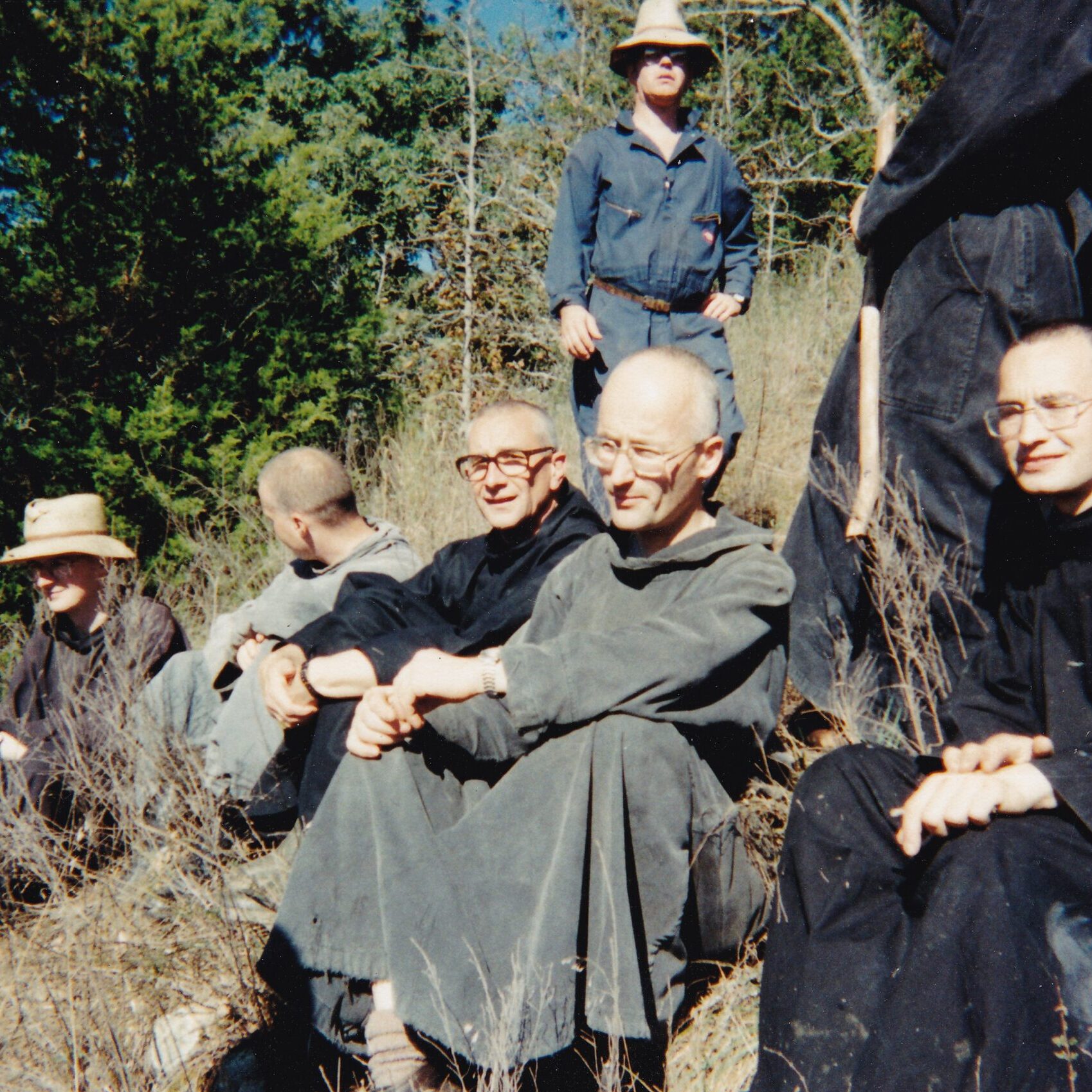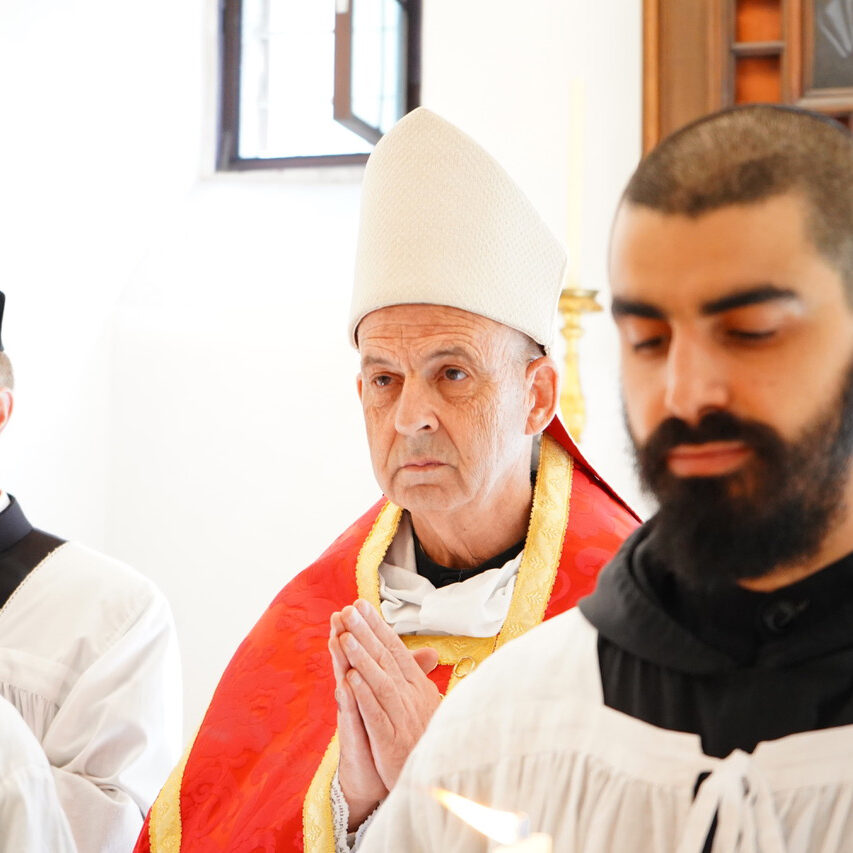As we continue to bask in the warmth and after-glow of the Resurrection of the Lord, many reflections nourish our contemplation, while we meditate upon the scenes of the Gospel relating the meetings of the Risen Lord with His disciples. One page in particular reminds me of many of our friends involved with the Traditional Latin Mass, as they walk along the path of their lives like the pilgrims of Emmaus after the tragedy of Good Friday. Contemplating the new restrictions on the older liturgical usage they seem to say: “We hoped that it was this older rite that should have helped restore the life of the Church: and now besides all this, today is the third day…” (See Luke 24:21ff) Their own “synodal path” is sad. Every new day seems to bring another scandalous declaration from a bishop or even a cardinal somewhere in the world. Many things in the ecclesiastical realm seem almost irreparably broken. But then the Lord joins them along the way and says to them and to all of us, “O foolish, and slow of heart to believe in all the things that the prophets have spoken. Ought not the Church, like her Lord, to have to suffer these things, and so to enter with Him into His glory?” (See ibid.)
and now besides all this, today is the third day…” (See Luke 24:21ff) Their own “synodal path” is sad. Every new day seems to bring another scandalous declaration from a bishop or even a cardinal somewhere in the world. Many things in the ecclesiastical realm seem almost irreparably broken. But then the Lord joins them along the way and says to them and to all of us, “O foolish, and slow of heart to believe in all the things that the prophets have spoken. Ought not the Church, like her Lord, to have to suffer these things, and so to enter with Him into His glory?” (See ibid.)
There occurs to me a certain analogy that I think can help us as we ponder these things. In the 12th and 13th centuries the tendency to embrace a certain ideal of evangelical poverty began to cause serious problems, as witnessed, for example, by the history of the heretical Waldensians or “Poor Men of Lyon.” A recent study by Donald Prudlo reveals the extent to which the controversy upset the academics of the University of Paris and much of French and European society at large. St. Thomas Aquinas and St. Bonaventure had vigorously to defend the very existence of the Friars Preachers and Friars Minor against their enemies, who labeled them “false prophets” and “precursors of the antichrist.” But Pope Innocent III and his successors, instead of crushing this movement, saw in these burgeoning orders dedicated to poverty a new life for the Church itself. We now know how the rest of the story proved to be an incomparable grace for the entire Christian world. (See Donald S. Prudlo, Thomas Aquinas: A Historical, Theological, and Environmental Portrait, pp. 30, 32, 52.)
I see two paths open to us in the future with regard to the “traditional” Mass. On the one hand it is possible that the Holy See and our bishops will suppress this form of celebration as much as possible. In that case, the usus antiquior will probably continue in a more or less clandestine and illicit way. A number of Catholics will live in a quasi-schism, anger towards the hierarchy will increase, many young people will stop practicing the faith, and a certain sadness will invade the Church. The other way would be for the Church authorities, it seems to me, to embrace what is really a new impetus in Christian life, to make this interest in the ancient rite fully Catholic and Orthodox in the best sense. It will no longer be a matter of old people clinging to nostalgic memories, but about a number of young people discovering a precious part of their own heritage.
The Supreme Pontiff certainly has the right to regulate liturgical usage in the Church, and we respect what has been decreed in Traditionis Custodes and the Responsa. We have received these documents with the seriousness and filial attitude that is always appropriate when the Holy Father and his collaborators speak, but, it must be said, not without a certain sadness.
Furthermore, it must be acknowledged that highly qualified people, both in the United States and in Europe, have respectfully protested against a certain harshness of Traditionis Custodes and the document that followed it. At least five cardinals, including Cardinal Burke, have expressed their dismay with respect to the Motu Proprio. There are also priests, theologians, philosophers, canonists, historians, and many others in the United States and around the world who respectfully share in that reaction.
We were pleased, on the other hand, not only to learn of the filial attitude that inspired the Priestly Fraternity of Saint Peter to defer to the Holy Father on this matter, but especially to see how kindly the latter responded to their petitions.
At this moment in time, despite many difficulties and fears, and without, I hope, deluding myself with mere wishful thinking, I can see already a beautiful blossoming of vocations and Catholic life on the horizon. I am speaking of the young and not-so-young who find substantial benefit in the celebration of the sacred liturgy according to the older forms, without excluding what is best in the liturgical reform of fifty years ago. This is not simply a matter of maintaining unflinching optimism despite the moral decadence that surrounds us on every side, but is about real people I meet here, far from the beaten track, in the middle of the rocky hills of eastern Oklahoma. Compared to the general Catholic population of the United States or of the world, they are not so numerous, but they are— perhaps—, in the face of the contemporary tsunamis of secularism, the three hundred of Gideon.
br. Philip Anderson, abbot






